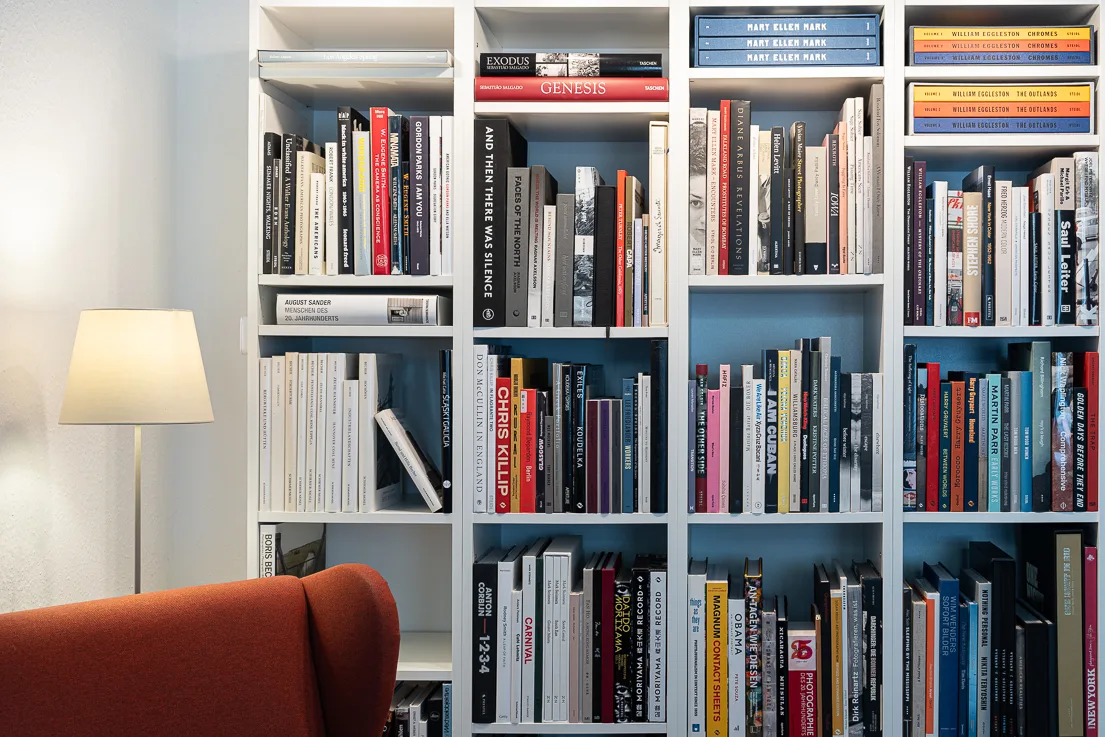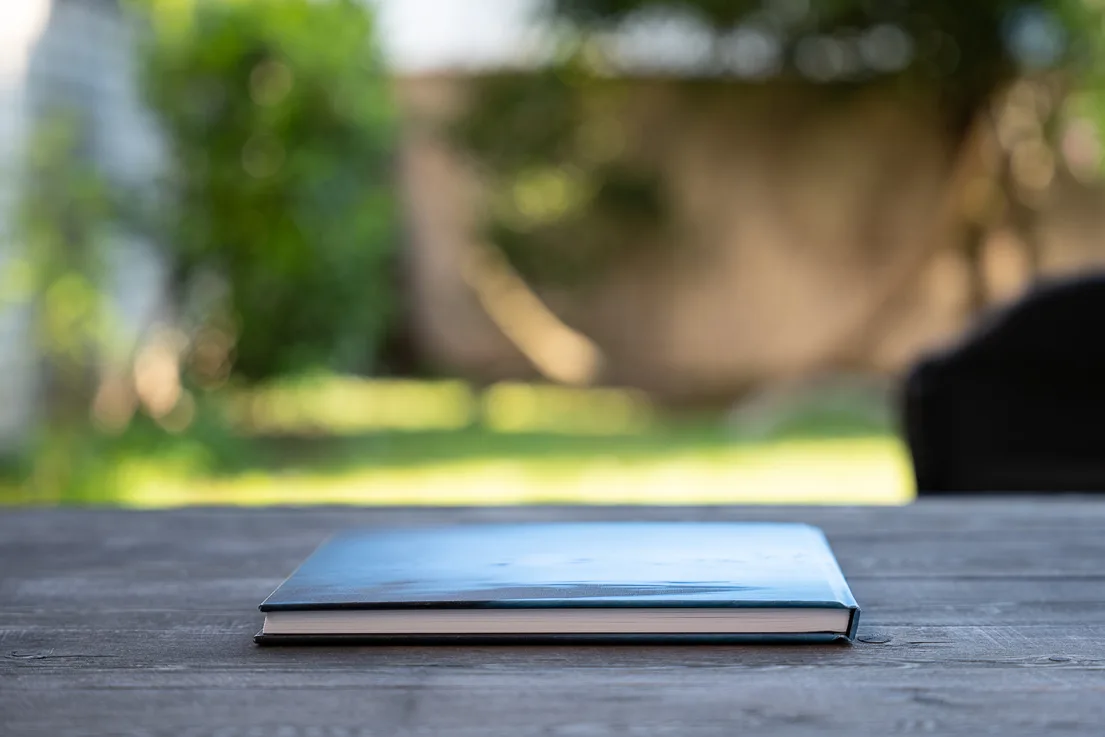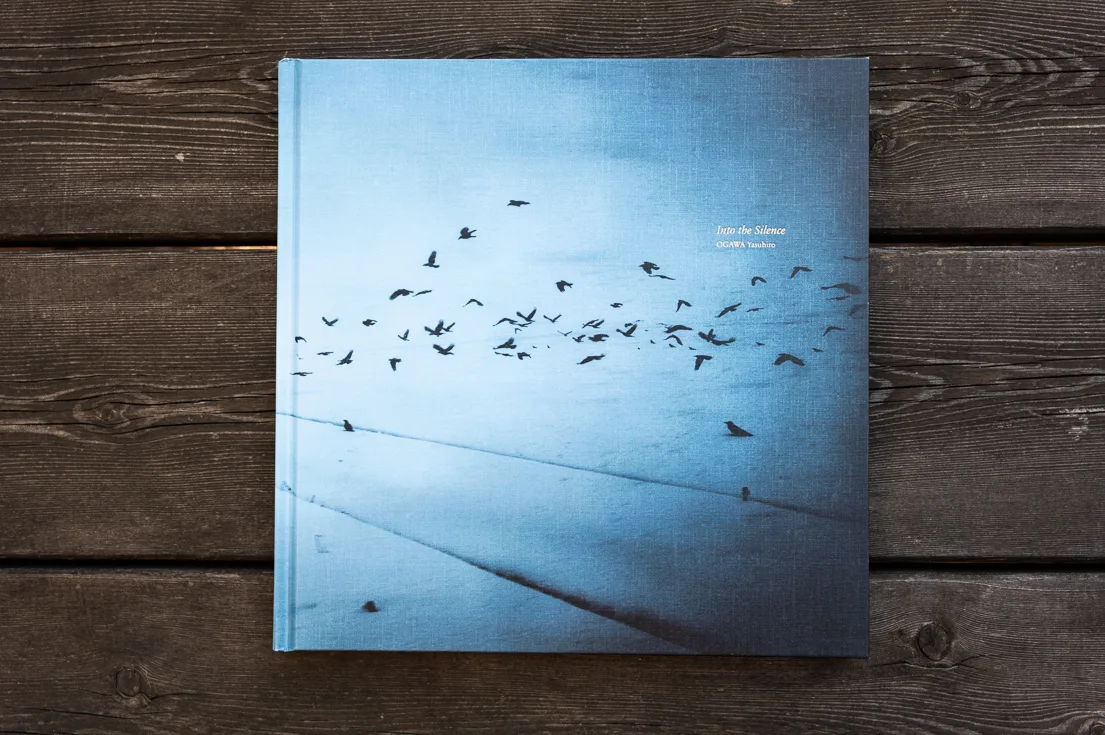On my Bookshelf | Yasuhiro Ogawa – Into the Silence
On my Bookshelf
In this column, I occasionally present a photo book that is close to my heart. It is not – or not necessarily – a new publication. It is simply a book that somehow fell into my hands and that I would like to recommend to others. And yes – of course it’s on my bookshelf.
It’s a bit of a continuation of my Photo book of the month column – just not necessarily as regular as before. And I’ve generally made the column a bit shorter and tighter. I hope you’ll enjoy it!

Prologue
For this episode, I have chosen a small book that I have only had for a few weeks. And, to be honest, it is by a photographer whom I have known for about the same amount of time. I am talking about the book ‘Into the Silence’ by Japanese photographer Yasuhiro Ogawa.

When I say ‘small book’ I mean two things. Firstly, it’s not a huge coffee table book, but rather a modest volume in terms of format. Secondly, it’s also small in the sense that it’s relatively unknown – at least here in Germany. And, to be honest, on the internet too. You don’t find as much about the photographer as you do about the book.
However, the images themselves are anything but small – from a photographic and artistic point of view. On the contrary, I would say that today I am presenting you with a gem that is much greater in terms of content and emotion than it may initially appear.
About the Photographer | Yasuhiro Ogawa
Japanese photographer Yasuhiro Ogawa was born in Kanagawa, Japan, in 1968 and currently lives and works in Tokyo. He holds a BA in English Literature from Kanagawa University and started photography at the age of 23, highly inspired by the work of Sebastião Salgado (R.I.P.). His professional career as a photographer, however, did not begin until 2000, during which time he has worked on various photographic genres, including documentary-journalistic projects. These include projects in a Tibetan monastery, a village in Guatemala and the Angkor Wat temple in Cambodia. You can see some of these older black and white works in his book ‘The Dreaming’, published in 2019.
More famous, however, are undoubtedly his – yes, what actually? – let’s say landscape photographs from various trips through Japan. However, these photographs are quite far removed from classic landscape or travel photography. Abstract compositions, stark colours, distortions, blurs and unusual perspectives are the defining elements of these images. And it is precisely this type of image that is the subject of the book ‘Into the Silence’, which I am presenting to you today.
Yasuhiro Ogawa has already had numerous successful solo and group exhibitions and has published six books to date. Oginawa has been honoured for his pictures with the ‘Taiyo Award’ and the ‘New Comer Award’ from the Photographic Society of Japan, among others, and is one of the most important figures in contemporary Japanese photography.
About the Photo Book | Into the Silence
In his book ‘Into the Silence’, Yasuhiro Ogawa takes us on a journey to the far north of Japan. No, not to Hokkaido, but to the northern tip of Japan’s main island of Honshu – to the Tōhoku region. He follows in the footsteps of the Japanese poet Matsuo Bashō, who repeatedly wandered through this northern part of the island from 1689 onwards, at the age of 45. The travel diaries from these wanderings have been preserved for posterity as ‘Oku no Hosomichi’ (The Narrow Road to the Deep North). The work is still considered one of the most important and inspiring pieces of Japanese literature today.
Ogawa himself was fascinated by this work as a boy and decided – now aged 46 himself – to follow in his tracks. Not on foot, like the poet once did, but mostly by train – however, we should forgive him that. Similar to Bashō, he spent ten years – not continuously, of course – photographing this part of Japan.
The result is a book containing 85 fascinating, dreamlike, often surreal photographs spread across 100 pages, many of which resemble paintings. Often dark, bright and intense in colour, some blurred and out of focus, others so sharp that it almost hurts. I suspect that some of the painterly, blurred images were taken with the Haruhisa Camera, which can also be seen on his Instagram account. Ogawa apparently built this contraption himself for his Fujifilm X-Pro2 – and later for an X-T5. As I said, I don’t really know, but it looks like it here and there.
There is not much text to accompany the images, apart from a very short foreword by the photographer (which is unfortunately printed on a photo in the book and is difficult to read) and an afterword by Blue Lotus Gallery director Sarah Green. Both are available in Japanese and English.
The book – I am referring to the second edition in hardcover – was published in 2024 by Blue Lotus Editions. Although it is sold out here and there, it can still be found at some bookshops – or directly from the publisher.
What I like about it
This wonderful book inspires me in several ways. Firstly, I’m a big fan of documentary travel photography anyway. I’m not talking about the kind of travel photography that appears in illustrated books about countries. It’s more about telling stories about the journey. And of course Oginawa does that – it’s one of the reasons for this particular trip. But he doesn’t do it in the usual, often seen way.
Yasuhiro Ogawa takes us on HIS journey. HIS point of view. HIS impressions. HIS emotions. HIS dreams. The results are dream landscapes – not to be confused with dreamlike landscapes! – and dreamscapes. Often dark, mysterious moments and details that are sometimes barely recognisable at first glance. Often an ecstasy of light and colour with plenty of room for interpretation and thought.
We see moments from long train journeys as well as encounters with people. Up close, emotional, cinematic. They tell of the beauty of the country as well as the beauty of travelling.
It is well worthwhile for the viewer to accompany Yasuhiro Ogawa on his journey with this book, to dream and, above all, to be inspired by the photographs.Sit in the garden, in the reading chair or at the table with a cup of tea. It’s really worth it!






















Die Seiten des Buches, die Du vorstellst, versprechen viel! Es dürfte aber nicht leicht sein, das Buch zu bestellen!
Interessant wäre es auch, so etwas wie eine Bauanleitung für diese spezielle Kamera zu bekommen. Ich habe im Netz etwas geforscht und dabei diverse Modelle gefunden. Kannst Du Näheres sagen?
ps Bei der deutschen Übersetzung schreibt man nach links un nur in GROßEN Buchstaben
Hallo Volker,
es ist nicht an jeder Ecke erhältlich, aber im Gegensatz zu manch’ anderem Buch doch nicht soooo schwer. Sowohl bei Photobookstore als auch bei Sentana Books. Ist natürlich alles in allem damit leider kein superbilliges Vergnügen, durch Versandkosten und ggf. noch Zoll (elender Brexit!). Zu der Haruhisa Camera habe ich wahrscheinlich nicht mehr gefunden als Du, halt Google. Bei Teletype gibt es so einen Russen(?), der da viel zu gepostet hat. Und auch sonst findet man ja das ein oder andere im Netz. Aber mich hat das auch nicht wirklich interessiert. Da es Dich interessiert: Dann bist Du wohl der Volker Krause, der auch den Blog hat?
VG Peter
P.S. Dein PS verstehe ich leider nicht, stehe wohl etwas auf dem Schlauch…
Hallo, Peter,
ich habe die Übersetzungsfunktion in meinem Safari-Browser ins Deutsche aufgerufen und dann in der Kommentarspalte geschrieben. Dann wurde von rechts nach links geschrieben und alle Buchstaben erschienen groß.
Gruß Volker
ps ja, ich bin der mit dem Blog.
Hallo Volker,
ich brauchte etwas, um nachzuvollziehen, was Du meinst… ich nutze die Übersetzungsfunktion in Safari eh nicht, auch nicht zum Schreiben. Aber das wird wohl eher nicht (nur) mit meiner Seite was zu tun haben, sondern vielleicht mit irgendwelche Inkompatibilitäten (Safari zu WordPress?). Wenn ich das bei Dir auf der Seite versuche, ist es das gleiche…
VG Peter